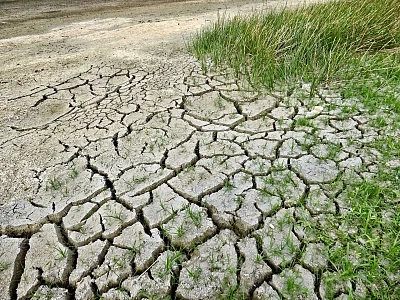Patna, July 1 (IANS) It has been more than a week since the much-awaited monsoon arrived in Bihar, but the water problems of the people are far from over.
Women and children waiting for hours and queueing up to collect water from tankers is still a common sight in the state, and clashes over water are being reported from both urban and rural areas. Local level demonstrations, held routinely to demand water, still mostly go unreported.
"With most water bodies in the state going dry, not just people, even cattle have been left struggling for survival. While farmers and cattle rearers have been forced to sell their livestock, wild animals like deer are found roaming outside villages in search of water," said a Water Resources Department official.
With rains so far less than expected, the situation is more alarming in 280 blocks of 25 districts. Last year, 534 blocks in the state's 38 districts were declared drought-hit after deficient rainfall.
In Gaya, where everything from handpumps to borewells and even tap water supply has failed, tankers are the only source of water for people since the past two months.
"Water tankers are our life line these days. We cannot even think of life without these. Till last year, the situation was not as bad," said Mohammed Shamim Khan, a resident of Gewalbigha in the heart of Gaya.
"Our handpumps dried up in May and the tap water supply has also failed. Now we are completely dependent on tankers for water," said Mokhtar Alam, another resident.
Alam said the water crisis is so severe that dozens of families have either shifted temporarily to their native villages or some other places. It isn't just handpumps that have dried up, even submersible pumps have failed as underground water has depleted.
According to district officials, Falgu river has lost nearly 60 feet of its water level in the past two years, causing an acute water crisis for over half a million people in Gaya and its neighbouring areas.
"Water level in Falgu, which remains dry throughout the year except for a few months in the monsoon, used to be hardly two-three feet below the ground otherwise. Last year, it dropped 30 feet and this year another 30 feet forcing authorities to shut down pumping stations and water supply centres," said Manish Kumar, executive engineer, Bihar Urban Infrastructure Development Corporation.
This has resulted in angry protests by local residents, who blocked roads and staged a dharna demanding adequate water supply.
But the water crisis is not confined to Gaya. The situation is no different in flood-prone Darbhanga and its neighbouring districts in the Mithilanchal region.
Alarmed by the situation, the Darbhanga district administration has constituted four teams of officials to conduct a survey of government ponds, most of which have either been encroached upon by powerful people or dried up over the years due to negligence.
Narayanjee Choudhary, who runs the Talab Bachao Abhiyan, told IANS: "There were more than 300 ponds in Darbhanga town in the 60s. By the 90s, the number came down to 200, now there are less than 100 ponds left."
Bihar Chief Secretary Deepak Kumar has ordered all districts to clear encroachments around ponds and work on their restoration and replenishment, along side rainwater harvesting.
What is shocking is that as per the government's own admission, of the state's total 1.99 lakh water bodies, 12,027 water bodies, including ponds, have been encroached upon by a nexus of powerful people. The Bihar government admitted this in 2016 after the Patna High Court asked it to identify the number of water bodies in the state, their present status and the action taken to rid them of encroachments.
Following this, the state government launched 'Operation Water Body Conservation' to free water bodies of encroachments and help promote groundwater conservation through traditional water harvesting systems such as ponds, lakes, canals, ahar and pynes.
This drive was part of the much hyped 'Disaster Risk Reduction Roadmap 2015-2030', which mandates action for water conservation by the concerned agencies.
Mahendra Yadav, an activist, said the present situation was the result of receding underground water after ponds and wells were dried up, filled up and levelled.
"Earlier ponds used to harvest rain water and recharge ground water. Now there is no stress on water harvesting even though the state receives lesser rainfall compared to earlier decades and people are more dependent on borewells," said Yadav.
In the past few years, several government reports have pointed out that the water crisis in Bihar is the result of overexploitation of underground water, which is showing signs of stress now.
The Central Ground Water Board's report for 2016-17 shows that the water levels in Bihar in May 2016, with respect to the pre-monsoon decadal mean of May (May 2006 to May 2015) witnessed a fall in 67 per cent of the 594 Hydrograph Network Stations.
Scientists have made it clear that indiscriminate exploitation of underground water from deeper aquifers could create a grim situation in the future. The question is how long before the state wakes up.
--IANS
ik/rtp/bg
(This story was auto-published from a syndicated feed. No part of the story has been edited by The Quint.)
(At The Quint, we question everything. Play an active role in shaping our journalism by becoming a member today.)
